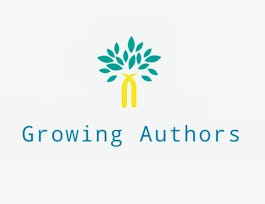When writers write, readers respond. Responding to student writing gives teachers one of the most meaningful avenues to help students learn and grow. In this module, learners will identify best practices in effectively responding to student writing. You will also define revision, identify how revision differs from editing, and examine strategies for teaching students how to engage in effective revision. Finally, because writing can also be used for testing, and because all students learn in increments over time, learners will identify a number of strategies for evaluating and assessing student writing, both for individual writings and a student writer’s progress over a period of time. Learners will also consider ways to involve students in both the responding and assessment processes. At the conclusion of this course, learners will have a toolbox full of strategies and practices for these three significant components of any writing class: responding to, revising and assessing student writing.



Responding, Revising and Assessing Student Writings
This course is part of Teaching Writing Specialization

Instructor: Mark Farrington
Sponsored by IEM UEM Group
Recommended experience
What you'll learn
Best practices for responding to student writing.
Strategies and techniques for teaching revision.
Theories and strategies for assessing student writing.
Skills you'll gain
- Editing
- Writing and Editing
- Constructive Feedback
- Teaching
- Proofreading
- Education and Training
- Student Engagement
- Instructing
- Pedagogy
- Peer Review
- Educational Materials
- Instructional and Curriculum Design
- Instructional Strategies
- Student-Centred Learning
- Instructional Design
- Course Development
- Leadership and Management
- Classroom Management
- Employee Performance Management
- Performance Management
Details to know

Add to your LinkedIn profile
4 assignments
See how employees at top companies are mastering in-demand skills

Build your subject-matter expertise
- Learn new concepts from industry experts
- Gain a foundational understanding of a subject or tool
- Develop job-relevant skills with hands-on projects
- Earn a shareable career certificate


Earn a career certificate
Add this credential to your LinkedIn profile, resume, or CV
Share it on social media and in your performance review

There are 4 modules in this course
It’s interesting to consider the verbs we often use to describe what we teachers do with a batch of student papers. We have papers to “grade;” papers to “correct.” Seldom do we say that we have a batch of papers we need to “respond to.” And yet it’s through our responses that students can best learn and grow. That doesn’t always happen; if you’ve taught before, you’ve probably had the experience of giving back papers on which you’ve worked hard to provide responses and instructions, only to watch your students take the papers you’re returning and turn right to the grade, ignoring everything else you’ve written. In this module, we’ll identify strategies for responding to student writing so that students will first of all, read and understand your comments, and then be able to use those comments for learning and growth. We’ll look at different ways to respond to student writing, including through conferences and peer review, and we’ll even consider effective ways to respond to students’ use of grammar. At the end of this module, you’ll reflect on how you might apply your learning to your own teaching situation.
What's included
14 videos10 readings2 assignments1 peer review2 discussion prompts
Verbs are interesting to consider when thinking of revision, too. In your classes, do (or will) you “require” revision? Will you “allow” revision? Will you “teach” revision? We might do all of these at some point, but the most challenging task – and the one that might be most valuable – is “teaching” revision. In this module, learners will identify what constitutes revision, particularly how revision differs from editing, and will examine strategies for teaching revision to their students. They will practice a variety of approaches to revision and reflect on how they might encourage revision in their classes.
What's included
7 videos7 readings1 assignment2 discussion prompts
A confession: I love to read what my students write; I love to try and help them make that writing better. I hate having to put a grade on their writing – and yet, I am required to do so. In this module, learners will identify strategies for evaluating and assessing student writing. They will examine the nature of rubrics, and how learning objectives connect to both assignments and assessments. They’ll identify the portfolio system of writing assessment and evaluate its benefits and challenges. They’ll reflect on their own feelings about grading student writing and identify a grading system they believe would be fair and workable in their classes.
What's included
10 videos8 readings1 assignment1 peer review2 discussion prompts
It’s been said that if you really want to know if you’ve learned something, teach it to someone else. In this module, learners will identify strategies for engaging students in practices most often reserved for only teachers, from having students engage in peer review to involving students in how an assignment might be assessed. They’ll identify ways that students, through reflection, can assess their own learning and identify areas of growth. They’ll reflect on their own learning throughout this course and create a plan for bringing aspects of that learning into their classrooms.
What's included
6 videos9 readings1 peer review2 discussion prompts
Instructor

Offered by
Why people choose Coursera for their career




Recommended if you're interested in Social Sciences

Arizona State University

The University of Sydney

Universidad Autónoma Metropolitana

Coursera Project Network

Open new doors with Coursera Plus
Unlimited access to 10,000+ world-class courses, hands-on projects, and job-ready certificate programs - all included in your subscription
Advance your career with an online degree
Earn a degree from world-class universities - 100% online
Join over 3,400 global companies that choose Coursera for Business
Upskill your employees to excel in the digital economy


